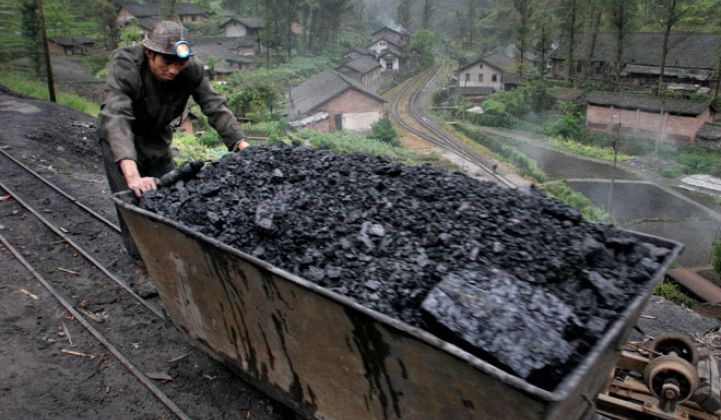Duke Energy and China Huaneng Group are following in the footsteps of the U.S. and Chinese governments to work together on ways to combat climate change – specifically, to capture and store the carbon emitted from coal-fired power plants.
The two utilities said Monday that they've signed a memorandum of understanding to share information and research on "a number of renewable and clean-energy fronts," with a particular focus on carbon capture.
The partnership follows a major push by the U.S. and Chinese governments to conduct joint research into technologies to save energy and reduce greenhouse gas emissions (see DOE, China to Research Greener Buildings, Vehicles, Energy).
Capturing and sequestering carbon from coal-fired power plants will be critical to combating climate change, as those plants are responsible for about half the world's man-made greenhouse gas emissions.
China recently surpassed the U.S. to become the world's top emitter of carbon dioxide. China and the U.S. are responsible for about two-fifths of the world's greenhouse-gas emissions.
The Duke-Huaneng partnership doesn't include any financial exchange at this point, but, "Potentially there could be some commercialization of technologies involving both companies, and looking for opportunities between the two," Duke spokesman David Scanzoni said Monday.
Both Duke and Huaneng have projects underway to capture carbon from coal-fired plants. Duke is building a 630-megawatt integrated gasification combined cycle (IGCC) coal plant in Edwardsport, Ind., using the well-known but commercially challenging technology of turning coal into a synthetic gas before it's burned.
That process cuts down on emissions of dangerous chemicals such as mercury and sulfur dioxide, but doesn't reduce carbon dioxide emissions in and of itself. So Duke is spending $17 million to study ways to capture carbon at the site, Scanzoni said.
Capturing carbon is only the first step. That carbon needs to be stored, or sequestered, in a way that keeps it from getting into the atmosphere. While some new technologies for that are being examined, most large-scale sequestration projects now underway are looking at storing the CO2 in underground caverns or other geologic formations (see Carbon Capture: Possible Solutions, Pt. III).
Duke is seeking permission from the Indiana Utility Regulatory Commission to spend $121 million more to study underground storage for the carbon captured at Edwardsport, Scanzoni said.
A similar research project at Duke's East Bend Generating Station in Kentucky is looking at underground carbon dioxide storage, Duke spokesman Jason Walls said. Duke is also replacing several 1940s-era coal-fired units at its Cliffside, N.C. facility with a more efficient, 825-megawatt pulverized coal plant expected to emit about 30 percent less carbon dioxide per unit of energy produced, he said.
As for Huaneng Group, its Huaneng Beijing Cogeneration Power Plant is the country's first carbon capture demonstration project, and the company is building a larger carbon capture system at a coal-fired plant in Shanghai, as well as a 250-megawatt IGCC plant in Tianjin.
Duke is not involved in one of the higher-profile coal carbon capture projects in the United States, the so-called FutureGen Alliance, which was recently revived by DOE after rising cost estimates caused the department to cancel the project in 2007 (see DOE Gives Go Ahead for FutureGen to Be in Illinois).



